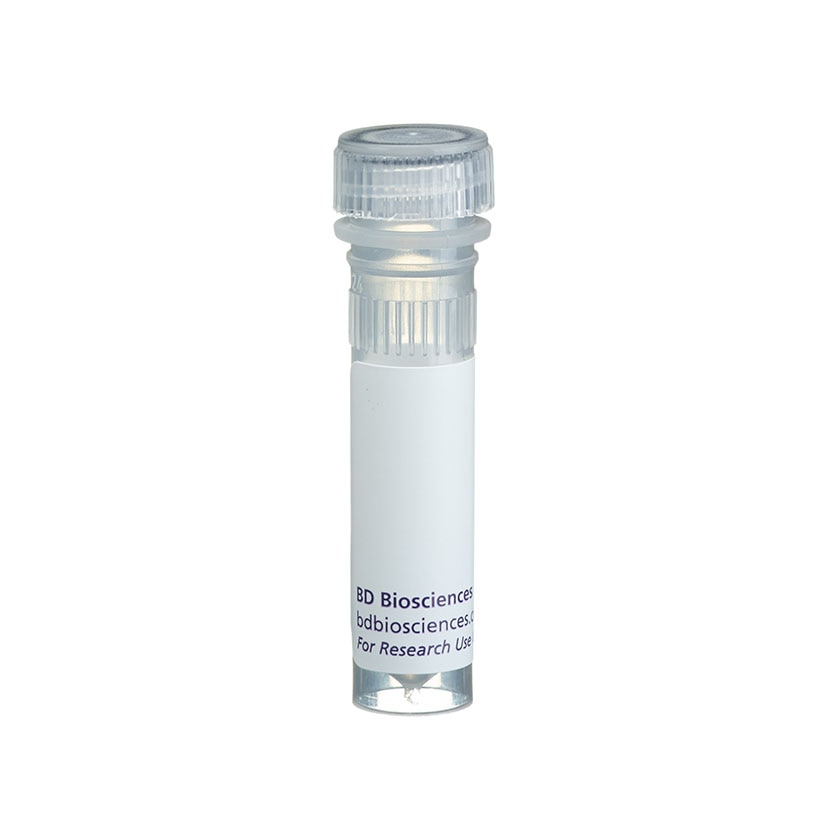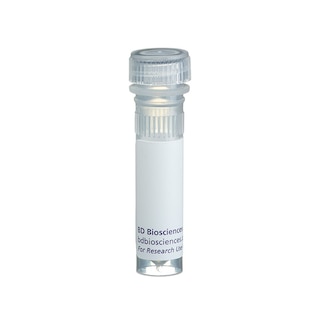-
Your selected country is
Middle East / Africa
- Change country/language
-
Reagents
- Flow Cytometry Reagents
-
Western Blotting and Molecular Reagents
- Immunoassay Reagents
-
Single-Cell Multiomics Reagents
- BD® OMICS-Guard Sample Preservation Buffer
- BD® AbSeq Assay
- BD® Single-Cell Multiplexing Kit
- BD Rhapsody™ ATAC-Seq Assays
- BD Rhapsody™ Whole Transcriptome Analysis (WTA) Amplification Kit
- BD Rhapsody™ TCR/BCR Next Multiomic Assays
- BD Rhapsody™ Targeted mRNA Kits
- BD Rhapsody™ Accessory Kits
- BD® OMICS-One Protein Panels
-
Functional Assays
-
Microscopy and Imaging Reagents
-
Cell Preparation and Separation Reagents
-
- BD® OMICS-Guard Sample Preservation Buffer
- BD® AbSeq Assay
- BD® Single-Cell Multiplexing Kit
- BD Rhapsody™ ATAC-Seq Assays
- BD Rhapsody™ Whole Transcriptome Analysis (WTA) Amplification Kit
- BD Rhapsody™ TCR/BCR Next Multiomic Assays
- BD Rhapsody™ Targeted mRNA Kits
- BD Rhapsody™ Accessory Kits
- BD® OMICS-One Protein Panels
- Middle East / Africa (English)
-
Change country/language
Old Browser
This page has been recently translated and is available in French now.
Looks like you're visiting us from United States.
Would you like to stay on the current country site or be switched to your country?
BD Pharmingen™ Biotin Rat Anti-Mouse CD185 (CXCR5)
Clone 2G8 (RUO)

Flow cytometric analysis of CD185 (CXCR5) expression on mouse splenocytes. Splenocytes were stained with FITC Rat Anti-Mouse CD45R/B220 (Cat. No. 553088) and Biotin Rat Anti-Mouse CD185 (CXCR5) (Cat. No. 551960), followed by PE Streptavidin (Cat. No. 554061). Two-color dot plot depicting CD185 (CXCR5) and CD45R/B220 expression were derived from gated events with the side and forward light-scattering characteristics of viable lymphocytes. The quadrant markers for the bivariate dot plots were set based on the Biotin Rat IgG2a, κ Isotype Control (Cat. No. 553928) staining.


Flow cytometric analysis of CD185 (CXCR5) expression on mouse splenocytes. Splenocytes were stained with FITC Rat Anti-Mouse CD45R/B220 (Cat. No. 553088) and Biotin Rat Anti-Mouse CD185 (CXCR5) (Cat. No. 551960), followed by PE Streptavidin (Cat. No. 554061). Two-color dot plot depicting CD185 (CXCR5) and CD45R/B220 expression were derived from gated events with the side and forward light-scattering characteristics of viable lymphocytes. The quadrant markers for the bivariate dot plots were set based on the Biotin Rat IgG2a, κ Isotype Control (Cat. No. 553928) staining.

Flow cytometric analysis of CD185 (CXCR5) expression on mouse splenocytes. Splenocytes were stained with FITC Rat Anti-Mouse CD45R/B220 (Cat. No. 553088) and Biotin Rat Anti-Mouse CD185 (CXCR5) (Cat. No. 551960), followed by PE Streptavidin (Cat. No. 554061). Two-color dot plot depicting CD185 (CXCR5) and CD45R/B220 expression were derived from gated events with the side and forward light-scattering characteristics of viable lymphocytes. The quadrant markers for the bivariate dot plots were set based on the Biotin Rat IgG2a, κ Isotype Control (Cat. No. 553928) staining.


ImageTitle~BD Pharmingen™ Biotin Rat Anti-Mouse CD185 (CXCR5)

Regulatory Status Legend
Any use of products other than the permitted use without the express written authorization of Becton, Dickinson and Company is strictly prohibited.
Preparation And Storage
Product Notices
- Since applications vary, each investigator should titrate the reagent to obtain optimal results.
- An isotype control should be used at the same concentration as the antibody of interest.
- Caution: Sodium azide yields highly toxic hydrazoic acid under acidic conditions. Dilute azide compounds in running water before discarding to avoid accumulation of potentially explosive deposits in plumbing.
- Please refer to http://regdocs.bd.com to access safety data sheets (SDS).
- For fluorochrome spectra and suitable instrument settings, please refer to our Multicolor Flow Cytometry web page at www.bdbiosciences.com/colors.
- Please refer to www.bdbiosciences.com/us/s/resources for technical protocols.
Companion Products


The 2G8 monoclonal antibody specifically binds to the mouse C-X-C Chemokine Receptor type 5, CXCR5. CXCR5 is also known as CD185, BLR1, NLR and MDR15. CXCR5 is a seven-transmembrane, G-protein-coupled receptor that is specific for the CXC chemokine, CXCL13/BLC/BCA-1. The expression of CXCR5 has been detected in spleen, lymph nodes, tonsils, brain, bone marrow, T cells, B cells, cerebrum, cerebellum, hippcampus and pituitary. In mouse spleen, CXCR5 was strictly expressed by mature B cells and a small subset of T lymphocytes. CXCR5 plays a role in directing the migration of B and T cells to B cell follicles with the spleen and certain other lymphoid tissues. The immunogen used to generate 2G8 hybridoma was a recombinant protein containing N-terminal amino acids of mouse CXCR5 (GST-NmBLR1).
Development References (7)
-
Barella L, Loetscher M, Tobler A, Baggiolini M, Moser B. Sequence variation of a novel heptahelical leucocyte receptor through alternative transcript formation. Biochem J. 1995; 309(3):773-779. (Biology). View Reference
-
Dobner T, Wolf I, Emrich T, Lipp M. Differentiation-specific expression of a novel G protein-coupled receptor from Burkitt's lymphoma. Eur J Immunol. 1992; 22(11):2795-2799. (Biology). View Reference
-
Forster R, Mattis AE, Kremmer E, Wolf E, Brem G, Lipp M. A putative chemokine receptor, BLR1, directs B cell migration to defined lymphoid organs and specific anatomic compartments of the spleen. Cell. 1996; 87(6):1037-1047. (Immunogen). View Reference
-
Gunn MD, Ngo VN, Ansel KM, Ekland EH, Cyster JG, Williams LT. A B-cell-homing chemokine made in lymphoid follicles activates Burkitt's lymphoma receptor-1. Nature. 1998; 391(6669):799-803. (Biology). View Reference
-
Kaiser E, Forster R, Wolf I, Ebensperger C, Kuehl WM, Lipp M. The G protein-coupled receptor BLR1 is involved in murine B cell differentiation and is also expressed in neuronal tissues. Eur J Immunol. 1993; 23(10):2532-2539. (Biology). View Reference
-
Kouba M, Vanetti M, Wang X, Schafer M, Hollt V. Cloning of a novel putative G-protein-coupled receptor (NLR) which is expressed in neuronal and lymphatic tissue. FEBS Lett. 1993; 321(2-3):173-178. (Biology). View Reference
-
Legler DF, Loetscher M, Roos RS, Clark-Lewis I, Baggiolini M, Moser B. B cell-attracting chemokine 1, a human CXC chemokine expressed in lymphoid tissues, selectively attracts B lymphocytes via BLR1/CXCR5. J Exp Med. 1998; 187(4):655-660. (Biology). View Reference
Please refer to Support Documents for Quality Certificates
Global - Refer to manufacturer's instructions for use and related User Manuals and Technical data sheets before using this products as described
Comparisons, where applicable, are made against older BD Technology, manual methods or are general performance claims. Comparisons are not made against non-BD technologies, unless otherwise noted.
For Research Use Only. Not for use in diagnostic or therapeutic procedures.